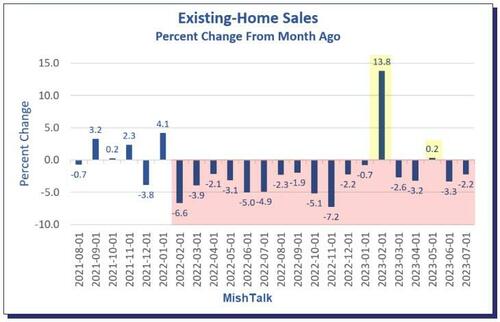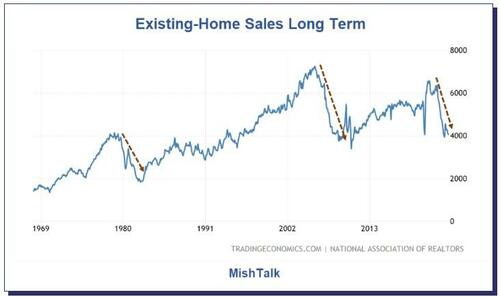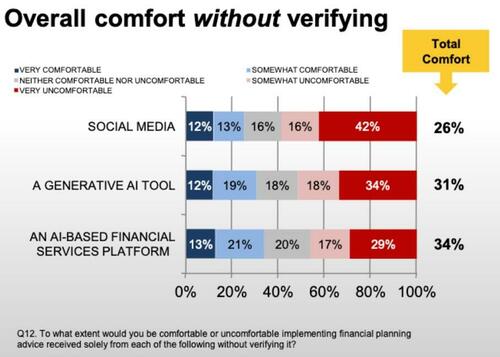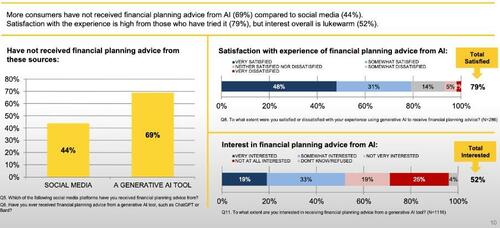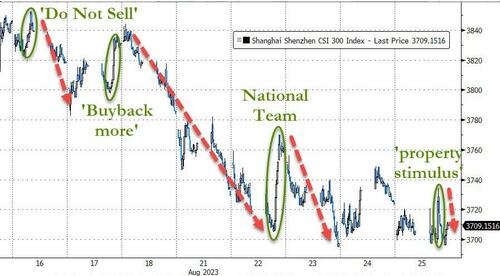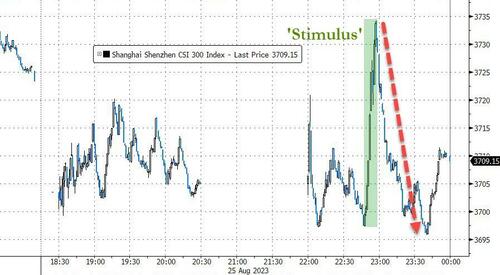Please enjoy the latest edition of Short Circuit, a weekly feature written by a bunch of people at the Institute for Justice.
New on the Short Circuit podcast: In which the panel bypasses the merits in recent abortion and gender transitioning cases and instead goes big on Article III standing.
- When you start this D.C. Circuit opinion about a January 6 defendant’s sentence, you might think it’s about Capitol riots. You will be disappointed (or delighted) to learn that it’s actually a grammar lesson, complete with diagramed sentences. Conclusion: This fellow can’t be sentenced to both prison and probation for the same petty offense. Dissent: Poppycock! The word “same” at issue in the statute here is an adjective, not a pronoun.
- Vehicle in Hooksett, N.H. is traveling in the right lane and doesn’t signal as the 2-lane road turns into a 1-laner. An officer stops vehicle and finds a passenger has outstanding warrants and was carrying a bag of drugs. But wait! The passenger argues state law does not require a signal when lanes merge, only when a vehicle has to change lanes. And this particular road doesn’t drop the right lane but just has the lanes equally blend together. District court: Indeed, “the two lanes gradually and almost imperceptibly blend into one lane.” First Circuit: The was no reasonable mistake of fact or law. Affirmed and evidence suppressed.
- In which the First Circuit rejects claims that a computer software firm owes a former employee hundreds of thousands of dollars and, synchronally, Judge Selya sees fit to offer us this vocab quiz: quondam, plinth, prophylaxis, gainsay, consentient.
- In 1993, artist Sam Kerson painted two large murals at the University of Vermont Law School, honoring the state’s role in the Underground Railroad and the abolition of slavery. But “[t]he Murals have not been without controversy,” with some complaining that they depict enslaved African people “in a cartoonish, almost animalistic style.” So in 2020 the law school decided to hide the murals behind acoustic paneling. Kerson sues, alleging the permanent concealment violates the Visual Artists Rights Act of 1990. Second Circuit: VARA protects against the alteration or destruction of works of art; it doesn’t require that art remain on display.
- Circuit split alert! A fractured en banc Sixth Circuit has said it’s not a RICO if your economic injuries are derivative of personal injuries, but the en banc Ninth Circuit says it is a RICO. And now a Second Circuit panel weighs in, in a case involving economic injuries to a truck driver who was fired when he failed a drug test after it turned out the CBD gummies he was using were falsely advertised to contain no THC. Their answer? It is a RICO!
- Disappointed after arriving at the Social Security Administration’s office in Philadelphia and finding it closed by the pandemic, local man gets into a scrape with two of the security guards. He’s convicted of assaulting federal officials. The man: But they were private security guards contracting with the feds. So they’re not federal officials. Technically. Third Circuit: “Technically” it is! The man is acquitted.
- Hypothetically speaking, if a coalition of firearms businesses challenged a new New Jersey statute allowing the Attorney General to sue them for activities they claim are protected by federal law, federal judges wouldn’t say the businesses lacked standing and their claims weren’t ripe via the metaphor “jumped the gun,” would they? Well, perhaps in the Third Circuit they would.
- Delaware physician is convicted on 13 counts of unlawfully dispensing opioids. At sentencing, the gov’t puts forward a medical expert who reviewed files for 24 of the 1,142 patients to whom the good doctor had prescribed controlled substances in the last two years, concluding that prescriptions for 18 of the patients were illegal. Extrapolating from the sample, prosecutors argued he should be sentenced based on a drug weight of 106,000 kilos. The doctor argues for 7,500 kilos and the court settles on 30,000 kilos, sentencing the doctor to 20 years in prison. Third Circuit: “Though the prosecution bears a heavy burden of proof, we will not let it cut corners.” Remanded for resentencing.
- The Prison Litigation Reform Act requires inmates to exhaust an internal grievance process before filing a federal lawsuit against prison officials, but per the Fourth Circuit, that doesn’t mean inmates can be forced to “walk … a nonsensical and perplexing path” to achieve said exhaustion. No need to disturb a $700k jury verdict against a Baltimore, Md. warden who (in 2013) was deliberately indifferent to the risk his officers would assault a detainee.
- Numerous Rapides Parish, La. deputies in bulletproof vests arrest man working in his garage at gun point. His crime? They thought a zombie joke he made on Facebook was at their expense. He’s charged with “terrorizing.” District court: Seems fine. Fifth Circuit: Grant of qualified immunity reversed. And no more relying on dustbinned WWI-era cases used to punish critics of the Wilson Administration. (This is an IJ case.)
- The Dallas County Sheriff’s Department provides two days off per week for its officers; men can take weekends, but women cannot. Fifth Circuit (en banc): Which might well be sex discrimination under Title VII. We overturn our precedent saying that Title VII only applies to “ultimate employment decisions,” like firing and promotions.
- “[The gov’t’s] theory is not merely new; it is also wrong.” Well, your editors always like reading that. Come for Jefferson Parish, La. seeking mandamus (to prevent a trial against it in one case because it had managed to delay class certification against it in another). Stay for the Fifth Circuit saying “no.”
- The demanding standards for bringing constitutional claims against a city often support the old adage that you can’t fight city hall. But sometimes you can. For instance, if the mayor and city council direct city workers to enter private property without permission or authority to move a bunch of dirt around (causing flooding and a snake infestation), you can sue the city. So says the Fifth Circuit, reviving a suit against the City of Houston.
- Madisonville, Tex. cop arranges for meth to be planted on his ex-wife, so that he can have her arrested and take custody of the kids. The ex-wife can (and did!) sue the cop. But can she also sue the city because the chief of police failed to supervise the cop and ratified his unlawful actions? The Fifth Circuit (unpublished) says no. While the Madisonville chief of police has the authority to set department policy, he is just a “decisionmaker,” not a “policymaker.”
- In the latest installment of Nondelegation Doctrine Watch, the Sixth Circuit concludes Congress did not unconstitutionally delegate legislative power to OSHA when it charged the Secretary of Labor with making regulations “reasonably necessary or appropriate to provide safe or healthful employment and places of employment.” Dissent: I’ve looked all over this statute and I don’t see an “intelligible principle” anywhere.
- Ohio man serves five years in prison after admitting to accidentally killing his toddler with an ATV. Five years after completing his sentence, he goes to the sheriff’s office and confesses to beating the boy to death. Double jeopardy to now charge the man with murder? The Sixth Circuit says no. He pled guilty to child endangerment, which is not the same offense as murder.
- A so-called “breaching” shotgun is great for safely blowing the hinges off doors—but only if its projectile hits the door’s hinges directly and not the door itself. During a SWAT training exercise in DuPage County, Ill., trainee’s projectile hits door itself, ricochets, and strikes another trainee in the spine, causing grievous injuries. Injured trainee: The shotgun’s manufacturer should be liable for failure to warn of the door-breaching gun’s wildly dangerous potential when aimed at doors. Jury: Here’s $7.5 mil in damages. Seventh Circuit: Affirmed.
- Allegation: During strip search, Ramsey County, Minn. corrections officer grabs detainee’s naked penis and gives it a hard squeeze. Officer: How could any officer be expected know this was over the line? Former state prison officials: “As a member of our profession, [he] was unquestionably aware that his conduct was unlawful.” Eighth Circuit: Denial of qualified immunity affirmed.
- Ninth Circuit: Immigration Judges and the members of the Board of Immigration Appeals are “inferior officers of the United States” (who can be appointed by an agency head like the Attorney General) and not “principal officers” (who must be appointed by the President and confirmed by the Senate). So things are fine the way they are. The opinion doesn’t tell us what that means for someone in the immigration system named Fortunato de Jesus Amador Duenas, but we suspect he’s not happy about it.
- The Tenth Circuit just held that a Colorado group that spends money advocating on issues appearing on the ballot has standing to bring a pre-enforcement First Amendment challenge to the state’s disclosure and registration requirements for ballot-issue committees. It’s a lucid 28-page ruling that walks through the relevant precedent in some detail, so it’s a little weird that the court issued it as an unpublished opinion.
- Countless pages of the federal reporters have been devoted to the titanic struggle between the irresistible force of cities’ desire to restrict commercial billboards and the immovable object of the First Amendment’s prohibition on regulating signs based on their message. Colorado: What if we just restrict billboards based on whether someone paid to rent them? Tenth Circuit: That’s … yeah, that’s actually way easier.
- On June 17, 2018, a Seneca airplane took off from Miami Executive Airport. Shortly thereafter, a Cessna radioed the control tower that it was inbound. Air traffic control sees the planes are on a collision course but cannot reach them in time, and 15 seconds later the planes collide in midair, killing all four people aboard. The pilots’ estates sue the United States under the Federal Tort Claims Act, alleging negligence by the air traffic controllers. Eleventh Circuit: It’s a tragedy, but it happened outside the airport’s airspace, which is also the limit of the air traffic controllers’ duty of care.
- Alabama law prohibits providing puberty blockers or cross-sex hormone treatment to minors to treat a discordance between their sex and sense of gender identity. Eleventh Circuit: The use of these medications, let alone for children, is not deeply rooted in our nation’s history and tradition, and the law doesn’t discriminate based on sex. Accordingly, rational basis review applies, and the preliminary injunction is reversed.
- And in en banc news, the Fifth Circuit will not reconsider its decision turning aside First Amendment retaliation claims brought on behalf of a Mississippi lawyer who told political activists where to find the ailing wife of a U.S. senator in a nursing home. (They snuck in and took a photo of her for an attack ad.) Dissent from denial of review: “Perhaps he shouldn’t have provided the information he was asked. But did he deserve to be arrested, prosecuted, and imprisoned? Did he deserve to be humiliated, even driven to suicide—and his family destroyed? It’s unfathomable that law enforcement officials would’ve devoted scarce police resources to pursuing [him], but for one thing: The people in power disliked his political views.”
Proponents of certificate of need (CON) laws—which require healthcare providers to prove to the gov’t that their services are “needed” before they can open or expand—claim CON laws lower costs, increase access to care, and increase the quality of care. And yet! A new IJ report (co-written with Matthew Mitchell) reviews 128 academic studies of CON laws and finds that overall 89 percent of tests show that CON laws lead to negative or neutral results. These laws are a failed policy that harm patients. Ask the Kentucky CON Task Force to repeal CON laws by submitting a comment by September 1 here.
The post Short Circuit: A Roundup of Recent Federal Court Decisions appeared first on Reason.com.
from Latest https://ift.tt/NU8bPxD
via IFTTT



